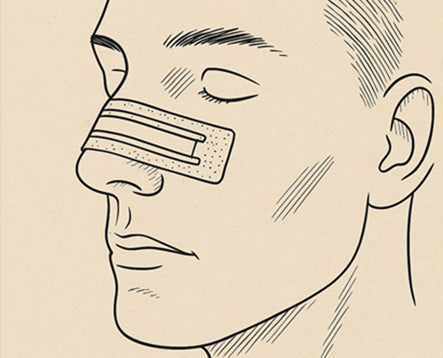How to use nasal strips correctly – tips for a perfect fit
Introduction
AirStripes nasal strips are small, lightweight, and easy to use—provided they're applied correctly. Proper application is crucial for a secure fit, comfortable wear, and long-lasting durability. In this article, you'll learn step-by-step how to apply and remove nasal strips correctly. We'll also give you tips on how to optimally prepare your skin and which mistakes to avoid.
Why the correct application is important
A nasal patch only fits perfectly when applied to clean, dry skin and the adhesive adheres fully. This not only ensures a firm hold but also ensures the patch stays comfortable throughout its entire wear. It also prevents the edges from coming loose prematurely or the patch from slipping.
Step-by-step instructions: Nasal patches a 
1. Prepare the skin
- Clean the bridge of your nose thoroughly with water and mild soap.
- Remove excess moisture with a clean towel.
- Make sure there are no cream or makeup residues on your skin.
2. Position the patch
- Carefully remove the protective film from the adhesive surface.
- Place the patch centrally over the bridge of your nose so that it sits symmetrically.
- Place it so that both sides rest evenly on the nostrils.
3. Press

- Press the patch on with gentle but even pressure.
- Brush from the center outwards to avoid air bubbles.
4. Remove

- Slowly peel off the plaster from both sides towards the middle.
- If it's stuck tight, moisten it slightly with lukewarm water to make it easier to remove.
Avoid common mistakes
- Stick on damp skin: Moisture reduces the adhesive strength.
- Installing too high or too low: The patch must be placed centrally.
- Multiple use: Nasal patches are disposable products.
Find the right nasal plaster
They are available in various sizes, shapes, and materials. Those looking for a discreet bandage can opt for transparent versions. These are less visible in everyday life and adapt to different skin tones.
➡ Tip: Check out our page on transparent nose strips.
Conclusion
Using a nasal patch correctly is easy if you follow a few steps. Clean, dry skin, proper positioning, and careful removal ensure comfort and durability. This way, you can get the most out of your patch – whether in everyday life, at work, or on the go.




